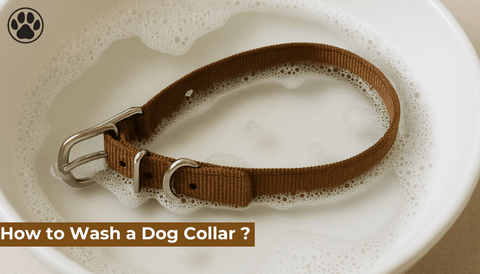
Can I Mix Two Different Dog Foods ?
of reading - words
Feeding your dog is one of the most important responsibilities of pet ownership. With so many types and brands of dog food available today, it’s natural to wonder: can I mix two different dog foods? The short answer is yes—but only under the right conditions and with the right approach.
In this article, we’ll explore the benefits and risks of mixing dog foods, how to do it safely, and what to avoid to ensure your dog stays healthy.
Why Would You Want to Mix Dog Foods?
Pet owners consider mixing dog foods for several reasons. Some want to improve nutritional variety, others are transitioning from one food to another, and some simply want to make mealtime more appealing.
Enhancing Nutrition
Different dog foods contain different blends of proteins, fats, vitamins, and minerals. By mixing two high-quality brands, you might provide a more balanced diet and cover potential nutritional gaps.
Improving Taste and Palatability
Some dogs are picky eaters. Mixing a more flavorful food with a blander one may increase appetite and help dogs who tend to skip meals.
Transitioning Between Brands
When switching from one food to another, mixing the two gradually helps prevent digestive upset. A slow transition reduces the risk of diarrhea, vomiting, or loss of appetite.
Cost or Availability
Mixing an affordable brand with a premium one can help reduce cost without fully compromising on quality. It’s also a useful strategy if your usual brand is temporarily out of stock.
Is It Safe to Mix Dog Foods?
In most cases, yes—it’s safe to mix dog foods as long as you follow a few guidelines. However, blindly combining different products without understanding their ingredients or nutritional value can lead to problems.
Make Sure the Foods Are Compatible
Always mix dog foods that are similar in nutritional value and designed for the same life stage (e.g., adult, puppy, senior). Combining a high-protein performance food with a low-calorie senior formula can cause imbalances.
Avoid Mixing Therapeutic or Prescription Diets
If your dog is on a veterinary-prescribed diet (for kidney disease, allergies, or diabetes), you should never mix it with another food without veterinary approval. Prescription diets are carefully formulated and mixing them may negate their benefits.
Watch Out for Overfeeding
Each dog food has its own caloric density. If you're not careful, mixing two foods can accidentally increase your dog's daily caloric intake, leading to weight gain.
How to Safely Mix Two Dog Foods
If you're confident that the two foods are safe to mix, here’s how to do it properly.
Step 1: Check Nutritional Labels
Compare the guaranteed analysis and ingredient list of both dog foods. Make sure they’re both complete and balanced according to AAFCO (Association of American Feed Control Officials) standards.
Step 2: Start with a 75/25 Mix
When introducing a new food, start by mixing 75% of the old food with 25% of the new one. Gradually increase the new food every 2-3 days over the course of a week. This gives your dog’s digestive system time to adjust.
Step 3: Monitor Your Dog’s Health
Watch for signs of digestive upset, such as loose stool, flatulence, vomiting, or decreased appetite. If problems arise, slow down the transition or consult your vet.
Step 4: Measure Food by Calories, Not Cups
Because dog foods have different energy densities, always calculate portion sizes based on calories, not just volume. This prevents accidental overfeeding or underfeeding.
Potential Risks of Mixing Dog Foods
While mixing can be beneficial, there are some risks and downsides if done improperly.
Nutritional Imbalance
Each dog food is formulated to be complete on its own. Mixing two can dilute certain nutrients or create excesses, especially if both have added vitamins or minerals.
Food Sensitivities or Allergies
Introducing a second food with new protein sources or grains may trigger food sensitivities or allergic reactions, especially in sensitive dogs.
Inconsistent Stool Quality
Sudden or frequent changes in diet can cause digestive instability. If you’re always changing your dog’s food mix, it may lead to chronic soft stool or diarrhea.
Should You Mix Dry and Wet Dog Food?
Yes, mixing dry kibble and wet food is common and often beneficial. Wet food adds moisture, flavor, and variety, while kibble supports dental health and chewing satisfaction. Just be sure to adjust the total calories accordingly and maintain consistent feeding portions.
FAQ
Can I mix two brands of dog food together?
Yes, but make sure both are complete, balanced, and suitable for your dog’s life stage. Transition gradually and monitor for any adverse reactions.
Can I mix puppy food with adult food?
It’s not recommended unless under vet supervision. Puppy food has higher levels of nutrients like protein and calcium, which may not be appropriate for adult dogs.
Will mixing dog food make my dog sick?
It can if done too quickly or if the foods are incompatible. Always mix slowly over 5–7 days and observe your dog closely during the transition.
Is it okay to mix grain-free and grain-inclusive dog food?
Generally, yes—if your dog tolerates grains. Just be mindful of ingredients and total nutrition. If your dog has allergies, consult your vet first.
How long should I take to transition between dog foods?
A gradual transition over 7–10 days is best. Start with 25% new food and slowly increase while decreasing the old food.




